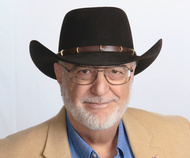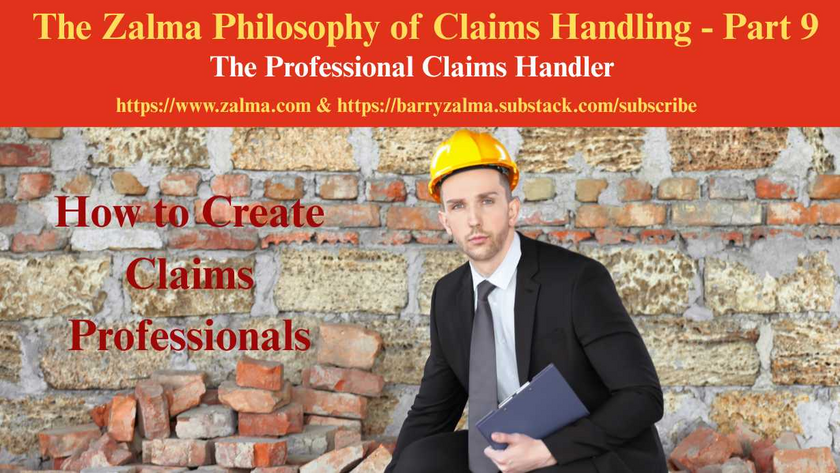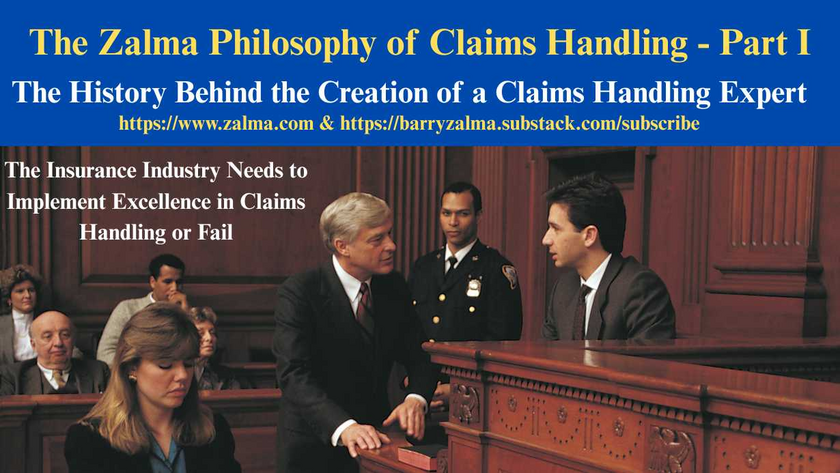
Even Clear Language in Policy Can be Ambiguous
Barry Zalma
Jun 27, 2023
Read the full article at https://lnkd.in/dkKWyn5n and see the full video at https://lnkd.in/dGKNbQ_Q and at https://lnkd.in/dkp9BSwN and at https://zalma.com/blog plus more than 4550 posts.
AI Collection of Facial Recognition Images Violates Illinois Statute
After Wynndalco Enterprises, LLC was sued in two putative class actions for violating the Illinois Biometric Information Privacy Act (“BIPA”) its business liability insurer, Citizens Insurance Company of America sued seeking a declaration that it has no obligation under the terms of the insurance contract to indemnify Wynndalco for the BIPA violations or to supply Wynndalco with a defense. The district court entered judgment on the pleadings for Wynndalco, finding that the language of the catch-all exclusion is ambiguous on its face and that, construing that ambiguity in favor of the insured, Citizens consequently had a duty to defend Wynndalco.
In Citizens Insurance Company of America v. Wynndalco Enterprises, LLC, et al., No. 22-2313, United States Court of Appeals, Seventh Circuit (June 15, 2023) the litigation arose from a massive database of facial-image scans assembled by Clearview AI, an artificial intelligence firm that specializes in facial recognition software.
Clearview AI allegedly extracted in excess of three billion photographs of individuals from online social media; converted those images into biometric facial recognition identifiers using proprietary algorithms; collected the original images and their biometric counterparts into its database; and paired those images with information as to where those images were found on the Internet. Clearview AI has also created a facial recognition application or “app” that allows a user to identify an individual by uploading a photograph of that person to the app. The app then allows the user to see other photographs of that same person on the media platforms or websites where they appear, along with the identifying information (including their name, address, and other personal information) associated with that individual.
Both suits allege that Wynndalco’s role in this transaction ran afoul of BIPA. Illinois became the first state in the nation to enact biometric data privacy legislation when it promulgated BIPA. Broadly speaking, BIPA codifies an individual’s right of privacy in and control over his or her biometric identifiers and biometric information.
At the time of the sale of the Clearview AI app to the Chicago Police Department, Wynndalco had business owner’s insurance coverage through a policy issued to it by Citizens. Section II of the policy sets forth the liability coverage for the business. Citizens contends that coverage of the class action claims is barred by a catch-all provision in a policy exclusion barring coverage for injuries arising out of certain statutory violations. The catch-all exclusion provided: “Any other laws, statutes, ordinances, or regulations, that address, prohibit or limit the printing, dissemination, disposal, collecting, recording, sending, transmitting, communicating or distribution of material or information.”
Illinois regards the proper interpretation of an insurance policy as a question of law. Policy terms that purport to limit the insurance company’s liability are construed in favor of coverage, but only when the terms are ambiguous or susceptible to more than one reasonable interpretation.
In some instances, the language of a policy exclusion may appear clear in isolation, but when compared with a separate policy provision granting coverage for the same type of action or injury that the exclusion ostensibly reaches, an ambiguity arises, in that the exclusion appears to take away with one hand coverage that the policy purports to give with the other. Because the aim of policy interpretation is to give effect to all provisions of the policy and avoid whenever possible construing one provision in a way that tends to nullify another provision, a court when confronted with such an ambiguity must consider whether the reach of the “swallowing” exclusion can be deemed narrower than its plain terms taken in isolation would otherwise suggest.
There was no dispute that a literal, plain-text reading of the catch-all provision would include BIPA violations.
The text does not seem particularly ambiguous. Quite the opposite, it seems clear as a bell- and the clear message is that the provision sweeps broadly. The text is undoubtedly broad. The Seventh Circuit agreed with Wynndalco that the catch-all provision of the exclusion is ambiguous. A plain-text reading of that provision would swallow a substantial portion of the coverage that the policy otherwise explicitly purports to provide in defining a covered “personal or advertising injury,” and arguably all of the coverage for certain categories of wrongs-copyright infringement, to take one example- that are entirely statutory in nature.
On a plain text reading, the catch-all provision has an extremely broad sweep-so broad, in fact, that the exclusion on its face would eliminate coverage for a number of statutory injuries expressly included in the definition of “personal and advertising injur[ies]” that the policy purports to cover. This clash between competing provisions of the policy gives rise to the Seventh Circuit concluding there is an ambiguity in the insurance contract language and that catch-all provision is “intractably ambiguous.”
Applying yet another well-established canon the ambiguity must be construed against Citizens and in favor of the insured. As the catch-all provision says nothing about injuries arising from statutes regulating privacy interests, and “[o]ral or written publication, in any manner, of material that violates a person’s right of privacy” is covered the Seventh Circuit concluded that the injuries alleged complaints at least potentially fall within the coverage of the Citizens policy. The Seventh Circuit concluded that Citizens thus owes its insured, Wynndalco, a duty to defend it against those complaints.
ZALMA OPINION
Exclusions in policies exist to limit the coverages provided by the insuring agreement and cause it to provide less coverage than an unlimited insuring agreement. Since people are entitled to enter into any contract that the insurer is willing to offer and the insured is willing to accept, the court will usually not rewrite the contract. There was no question that the “catch-all” exclusion was clear and unambiguous but the District Court and the Seventh Circuit created an ambiguity because the exclusion limited the effect of the insuring agreements. In this case the Seventh Circuit rewrote the policy and provided the insured more coverage than was provided by the policy.
(c) 2023 Barry Zalma & ClaimSchool, Inc.
Please tell your friends and colleagues about this blog and the videos and let them subscribe to the blog and the videos.
Subscribe and receive videos limited to subscribers of Excellence in Claims Handling at locals.com https://zalmaoninsurance.locals.com/subscribe.
Consider subscribing to my publications at substack at https://barryzalma.substack.com/publish/post/107007808
Go to Newsbreak.com https://www.newsbreak.com/@c/1653419?s=01
Barry Zalma, Esq., CFE, is available at http://www.zalma.com and [email protected]
Follow me on LinkedIn: www.linkedin.com/comm/mynetwork/discovery-see-all?usecase=PEOPLE_FOLLOWS&followMember=barry-zalma-esq-cfe-a6b5257
Write to Mr. Zalma at [email protected]; http://www.zalma.com; http://zalma.com/blog; daily articles are published at https://zalma.substack.com. Go to the podcast Zalma On Insurance at https://podcasters.spotify.com/pod/show/barry-zalma/support; Follow Mr. Zalma on Twitter at https://twitter.com/bzalma; Go to Barry Zalma videos at Rumble.com at https://rumble.com/c/c-262921; Go to Barry Zalma on YouTube- https://www.youtube.com/channel/UCysiZklEtxZsSF9DfC0Expg; https://creators.newsbreak.com/home/content/post; Go to the Insurance Claims Library – https://zalma.com/blog/insurance-claims-library.
Please tell your friends and colleagues about this blog and the videos and let them subscribe to the blog and the videos.
Subscribe and receive videos limited to subscribers of Excellence in Claims Handling at locals.com https://lnkd.in/gfFKUaTf.
Consider subscribing to my publications at substack at https://lnkd.in/gcZKhG6g
Go to Newsbreak.com https://lnkd.in/g8azKc34
Follow me on LinkedIn: https://lnkd.in/guWk7gfM
Go to Barry Zalma videos at Rumble.com at https://lnkd.in/gV9QJYH; Go to Barry Zalma on YouTube- https://lnkd.in/g2hGv88; https://lnkd.in/gYqJ_JcC, go to the Insurance Claims Library – https://lnkd.in/gWVSBde.
Judge Who Lied to Get Elected Cannot Serve
Post 5245
Read the full article at https://lnkd.in/g7MkYfq5, see the video at https://lnkd.in/g9EbtuUC and at https://lnkd.in/grHpMXUB, and at https://zalma.com/blog plus more than 5200 posts.
In In Re: Judge Tiffany Foxworth-Roberts, No. 2025-O-01127, Supreme Court of Louisiana (December 11, 2025) the Louisiana Supreme Court in an opinion by Chief Justice Weimer dealt with the recommendation of the Judiciary Commission of Louisiana (Commission) that Judge Tiffany Foxworth-Roberts be removed from office for:
1. making false and misleading statements regarding her judicial campaigns;
2. making false and misleading statements to police investigating the reported burglary of her car; and
3. withholding information and providing false, incomplete, or misleading information during the investigation by the Office of Special Counsel (OSC), as well as in the proceedings before the Commission.
KEY FACTS
Complaint & Investigation:
In May 2021, an anonymous complaint led to an investigation that the ...
Newly Acquired Auto Not Insured if Insurer not Notified Within 30 Days of Acquisition
Post 5244
Read the full article at https://www.linkedin.com/pulse/failure-respond-complaint-deemed-culpable-willful-zalma-esq-cfe-yqbzc, see the video at and at and https://zalma.com/blog plus more than 5200 posts.
Insured’s Error Eliminated Coverage
In Selective Insurance Company Of South Carolina v. KS Automotive, LLC d/b/a KS Automotive, et al., No. 2:25-cv-02985-JDW, United States District Court, E.D. Pennsylvania (December 8, 2025) Selective Insurance Company of South Carolina issued a commercial auto insurance policy to KS Automotive LLC (and its related entities) for the period September 27, 2023, to September 27, 2024. The policy covered three types of vehicles: those specifically listed, hired vehicles, and non-owned vehicles used in KS Auto’s business. If KS Auto acquired a new vehicle, it had to ...

Newly Acquired Auto Not Insured if Insurer not Notified Within 30 Days of Acquisition
Post 5244
Read the full article at https://www.linkedin.com/pulse/failure-respond-complaint-deemed-culpable-willful-zalma-esq-cfe-yqbzc, see the video at and at and https://zalma.com/blog plus more than 5200 posts.
Insured’s Error Eliminated Coverage
In Selective Insurance Company Of South Carolina v. KS Automotive, LLC d/b/a KS Automotive, et al., No. 2:25-cv-02985-JDW, United States District Court, E.D. Pennsylvania (December 8, 2025) Selective Insurance Company of South Carolina issued a commercial auto insurance policy to KS Automotive LLC (and its related entities) for the period September 27, 2023, to September 27, 2024. The policy covered three types of vehicles: those specifically listed, hired vehicles, and non-owned vehicles used in KS Auto’s business. If KS Auto acquired a new vehicle, it had to ...

Zalma’s Insurance Fraud Letter
Read the full article at https://lnkd.in/dG829BF6; see the video at https://lnkd.in/dyCggZMZ and at https://lnkd.in/d6a9QdDd.
ZIFL Volume 29, Issue 24
Subscribe to the e-mail Version of ZIFL, it’s Free! https://visitor.r20.constantcontact.com/manage/optin?v=001Gb86hroKqEYVdo-PWnMUkcitKvwMc3HNWiyrn6jw8ERzpnmgU_oNjTrm1U1YGZ7_ay4AZ7_mCLQBKsXokYWFyD_Xo_zMFYUMovVTCgTAs7liC1eR4LsDBrk2zBNDMBPp7Bq0VeAA-SNvk6xgrgl8dNR0BjCMTm_gE7bAycDEHwRXFAoyVjSABkXPPaG2Jb3SEvkeZXRXPDs%3D
Zalma’s Insurance Fraud Letter (ZIFL) continues its 29th year of publication dedicated to those involved in reducing the effect of insurance fraud. ZIFL is published 24 times a year by ClaimSchool and is written by Barry Zalma. It is provided FREE to anyone who visits the site at http://zalma.com/zalmas-insurance-fraud-letter-2/
Zalma’s Insurance Fraud Letter
Merry Christmas & Happy Hannukah
Read the following Articles from the December 15, 2025 issue:
Read the full 19 page issue of ZIFL at ...
The Professional Claims Handler
Post 5219
Posted on October 31, 2025 by Barry Zalma
An Insurance claims professionals should be a person who:
Can read and understand the insurance policies issued by the insurer.
Understands the promises made by the policy.
Understand their obligation, as an insurer’s claims staff, to fulfill the promises made.
Are competent investigators.
Have empathy and recognize the difference between empathy and sympathy.
Understand medicine relating to traumatic injuries and are sufficiently versed in tort law to deal with lawyers as equals.
Understand how to repair damage to real and personal property and the value of the repairs or the property.
Understand how to negotiate a fair and reasonable settlement with the insured that is fair and reasonable to both the insured and the insurer.
How to Create Claims Professionals
To avoid fraudulent claims, claims of breach of contract, bad faith, punitive damages, unresolved losses, and to make a profit, insurers ...

The History Behind the Creation of a Claims Handling Expert
The Insurance Industry Needs to Implement Excellence in Claims Handling or Fail
Post 5210
This is a change from my normal blog postings. It is my attempt. in more than one post, to explain the need for professional claims representatives who comply with the basic custom and practice of the insurance industry. This statement of my philosophy on claims handling starts with my history as a claims adjuster, insurance defense and coverage lawyer and insurance claims handling expert.
My Training to be an Insurance Claims Adjuster
When I was discharged from the US Army in 1967 I was hired as an insurance adjuster trainee by a professional and well respected insurance company. The insurer took a chance on me because I had been an Army Intelligence Investigator for my three years in the military and could use that training and experience to be a basis to become a professional insurance adjuster.
I was initially sat at a desk reading a text-book on insurance ...














